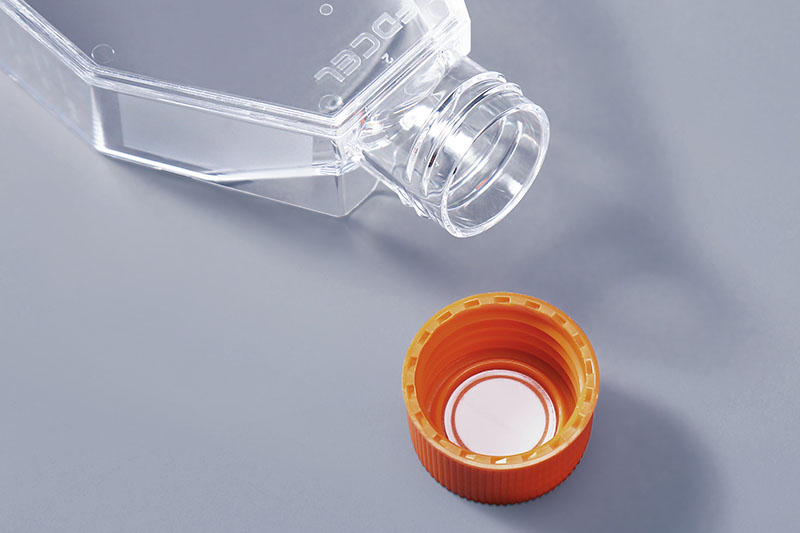When culturing cells, cell culture flasks are a kind of consumable with high usage rate. When culturing cells, they will experience four different growth phases, namely stopper, logarithmic phase, stationary phase and decline phase. These four phases reflect the different growth states of cells.
Arrest phase: The phase in which cells adapt to the culture conditions in the cell culture flask, during which the cells do not divide. Cells typically attach within 24 hours of starting the culture, and the total length of this phase depends on the growth phase and seeding density at which the cells were used at the beginning of the culture.
FuDau T25 Cell Culture Flasks
Log phase: Cells are actively dividing during this phase and are the optimal time to assess population growth and general data collection. Late in log phase, before cell stress due to overcrowding is the best time to pass cells (subculture).
Stationary phase: As cells reach 100% confluence, cell growth slows down at this stage, and less than 1/10 cells are in an active cell cycle. Cells are very vulnerable at this stage, so care needs to be taken to ensure that cells are passaged before or at the beginning of this stage.
FuDau T75 Cell Culture Flasks
Decay phase: a natural part of the cell cycle. During this phase, the number of viable cell populations decreases as cell death predominates.
The above are the four growth stages that the cells cultured in the cell culture flask need to go through. If the cells are to be passaged, the cells in the log phase should be selected to ensure a good growth state in the later stage.
The FAI climbed 5.9 percent year-on-year in the first 11 months of 2018, quickening from the 5.7-percent growth in Jan-Oct, the National Bureau of Statistics (NBS) said Friday in an online statement.
The key indicator of investment, dubbed a major growth driver, hit the bottom in August and has since started to rebound steadily.
In the face of emerging economic challenges home and abroad, China has stepped up efforts to stabilize investment, in particular rolling out measures to motivate private investors and channel funds into infrastructure.
Friday's data showed private investment, accounting for more than 60 percent of the total FAI, expanded by a brisk 8.7 percent.
NBS spokesperson Mao Shengyong said funds into weak economic links registered rapid increases as investment in environmental protection and agriculture jumped 42 percent and 12.5 percent respectively, much faster than the average.
In breakdown, investment in high-tech and equipment manufacturing remained vigorous with 16.1-percent and 11.6-percent increases respectively in the first 11 months. Infrastructure investment gained 3.7 percent, staying flat. Investment in property development rose 9.7 percent, also unchanged.
 English
English




















































